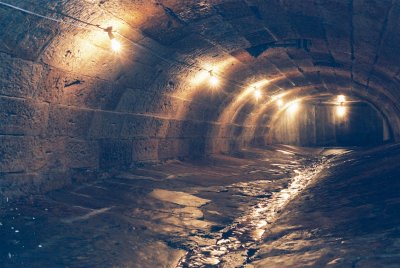Water, drains, and sewers. We take them for granted (until there’s a problem) and rarely give consideration to how a city’s sub-surface infrastructure develops over time. Here are some interesting facts about Sydney’s Tank Stream.
- After a drought in 1789 when Sydney’s water supply was almost exhausted, the Governor ordered 3 tanks be cut into the sandstone of the stream (near Hunter and Pitt Streets) to act as a reservoir. (1)
- Professor John Smith dated the tank about 1802. (2)
- By 1826 pollution caused the Tank Stream to be abandoned as a source of water supply. Water was carted from Lachlan Swamp – the ponds in Centennial Park – to a watering point in Hyde Park. (3)
- In the 1820’s John Busby proposed cutting a tunnel from Lachlan Swamp to Hyde Park – key for the enactment of The Sydney Water Supply Act (1833) – inaugural legislation relating to Sydney’s water supply. (4)
- Construction of Busby’s bore commenced in 1827 and completed in 1837, with the Tank Stream becoming the sewer and rainwater drain. Sydney’s population hit 20,000+. (5)
- Busby’s Bore was capable of delivering 400,000 gallons of water per day; a 15 million gallon reservoir that was to be built at Hyde Park failed to eventuate; and during a drought in 1838/39 though Busby’s Bore did not run dry, the townsfolk were forced to pay 5 cents per bucket of water. (6)
- Today the Tank Stream is part of the storm water system for Sydney’s CBD. (7)
- A fountain in Herald Square, Circular Quay, celebrates the Tank Stream and its historical significance. (8)



